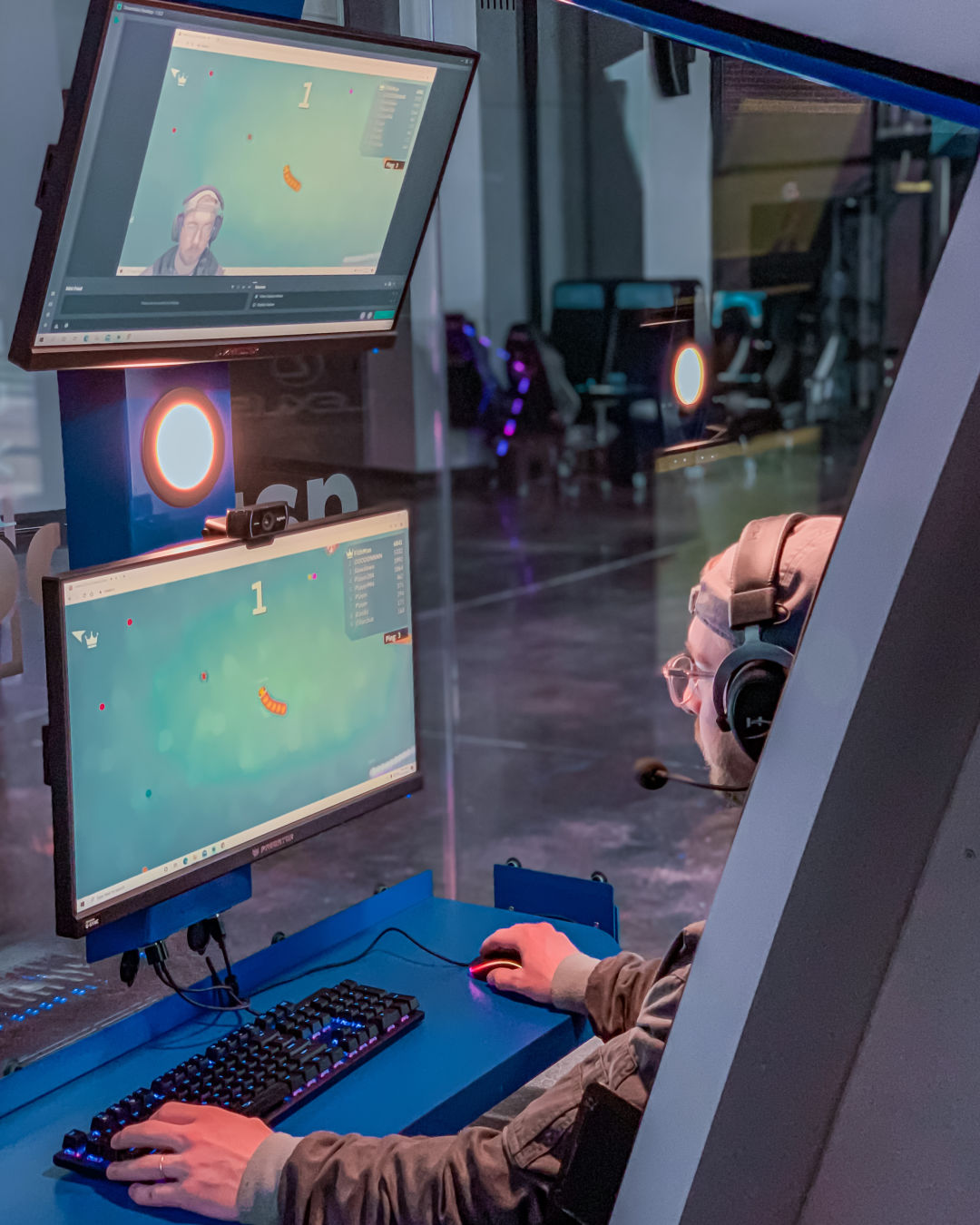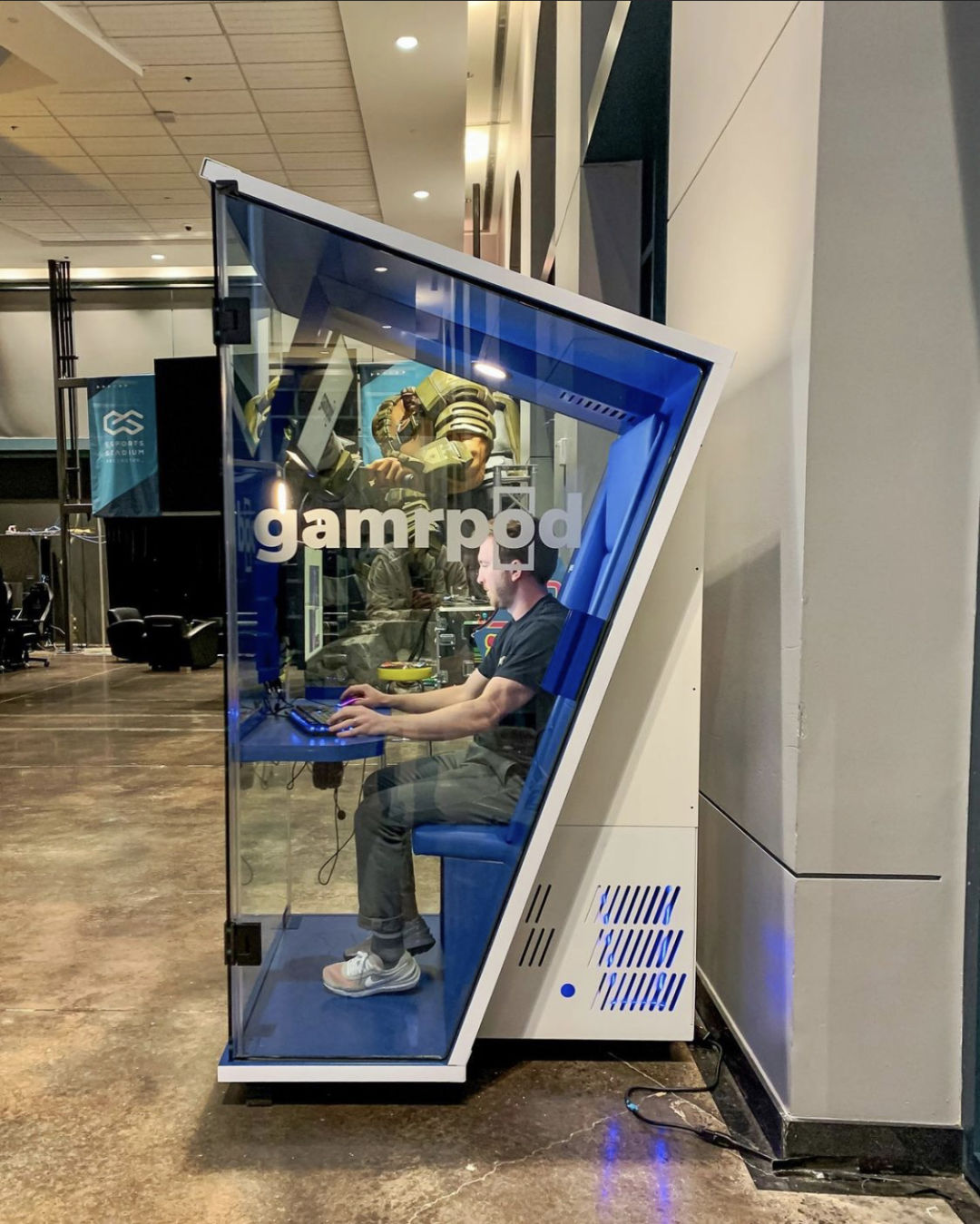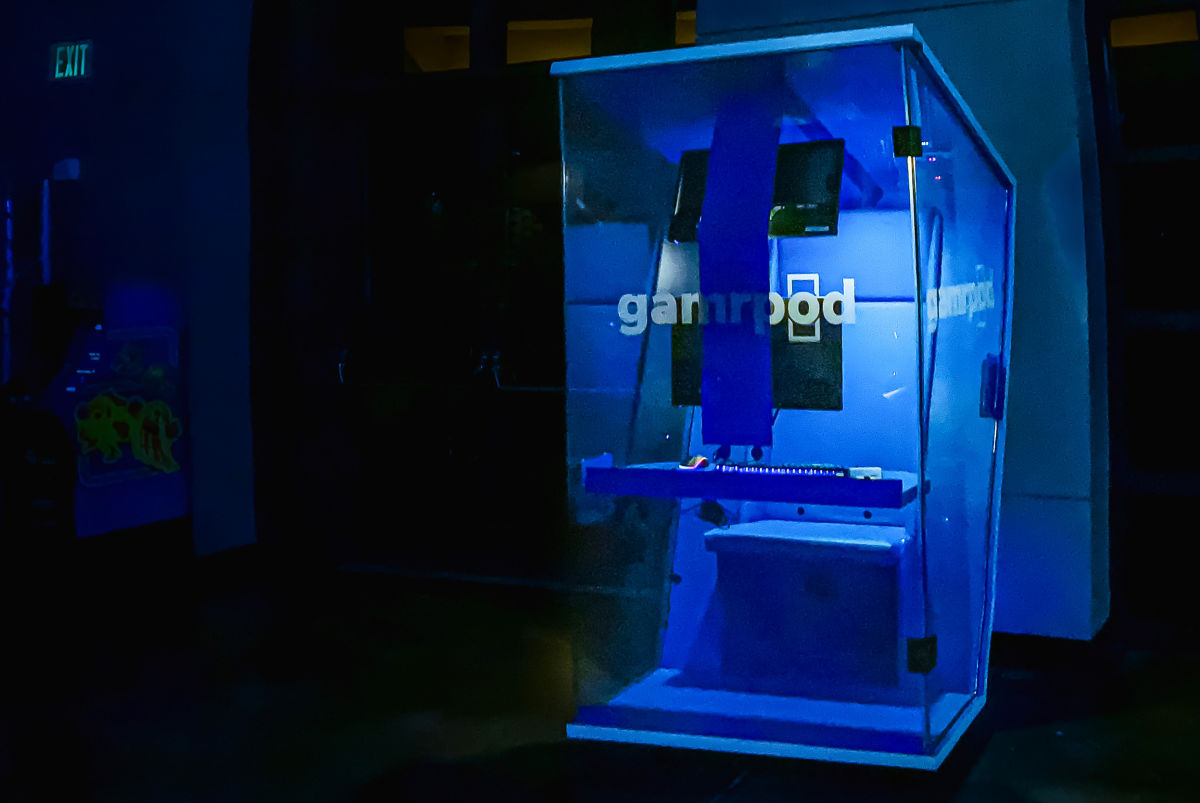The Gamrpod, a soundproof studio microphone, aims to change the way gamers and podcasters work
Anyone who’s tried to focus at their desk, only to be distracted by chatter, phone calls, and snack crunches, understands the value of a quiet workplace. But for professional gamers and video creators, unwanted sounds aren’t just distracting, they can also show up uninvited in video and audio content, distracting from a quality performance.
For context: professional gamers play video games and compete in tournaments as part of a career. Similarly, others create live or recorded videos or podcasts. Some are even famous YouTubers who have earned millions from their channels. To find a solution, Temple University alumni Dalton Carroll and Sam Speaker, both 30, created a soundproof gaming and recording booth called gampod.
Carroll, now a Sarasota resident, met Speaker in college when the two were paired as roommates. They quickly bonded over a shared passion for video games and spent hours playing after class. In 2019, Speaker was looking to launch his career in video recording and quickly discovered the high cost of soundproof desk modules and recording equipment. Because it was so expensive, Speaker decided instead to invest his money in developing a new product that would meet both his gaming and recording needs. He and Carroll built their own prototype soundproof micro-studio in Carroll’s garage and named it the Gamrpod.
Carroll and Speaker tested the first version of Gamrpod at the Tap Esports Center in Philadelphia. “Kids without their own recording equipment could hop into a Gamrpod to create videos,” says Carroll, “and it helped them disconnect from the sounds of others talking and the opening of chip bags.” The pair then collected data and user feedback from the trials and applied it in the latest version of the unit, which was released around six months ago.

The current four-by-four foot Gamrpod looks like a one-person pew in a glass box. In this one, the chair sits behind a small desk and two screens, with enough space for one person and maybe a feline friend. The chair and back wall are covered with blue screens, which function as green screens to allow the user to change the background image. More concretely, online teachers can make it a classroom backdrop. The Gamrpod also has built-in lighting and ventilation to keep both the pod and the tower compartment cool.
While Carroll and Speaker originally designed the pod for gamers, another market soon emerged.
“We started getting inquiries about placing units in university technology centers,” says Carroll, “that faculty and students could use for online classes instead of occupying a study hall of entire group.” Today, these tech hubs are as ubiquitous on college campuses as libraries and operate similarly. Students can check cameras, laptops, and other gear like they would a book. Temple University Tech Center now houses two Gamrpods, which students use for free for projects and other activities, such as podcasting.

Anyone can buy a Gamrpod for their home, but Carroll says the product is really meant for use in universities and businesses.
“A Gamrpod costs around $9,995,” he says, “and many companies will buy advertising space outside of the Gamrpod, using it as a billboard, which can help offset the cost. ” That might sound lavish, but Carroll points out that buying a few Gamrpods is more cost-effective than building a new recording rig.
Like all workspaces, the Gamrpod has its pros and cons. Illustrator and video voice-over recorder Andrew Theophilopoulos likes the privacy it offers, but worries about the product’s ergonomics. “I wish there was a standing desk,” he says, unsure of how comfortable the built-in seat would be for long periods.
Carroll says that due to building code constraints, the Gamrpod, currently made in Canada, is not wheelchair accessible. However, he adds that users who can dismount their wheelchair on the bench should be able to maneuver from their wheelchair into the bassinet.
Professional League of Legends player Arthur Cruz, meanwhile, finds the Gamrpod futuristic and impressive. “It looks like something out of a movie,” says the 25-year-old Brazilian player.
Cruz often travels to big cities like São Paulo to compete in esports championships, sharing a gaming office with other team members. During the offseason, he trains from a home in his parents’ house. “When I’m at the gaming office in São Paulo, the environment is designed for concentration,” he says, “but at home my mom opens the door and starts talking to me about random things.” Cruz adds that most of the time his family respects his workspace and minimizes distractions, but the Gamrpod could come in handy when other family members want to share his office space while he works.
“There’s a stereotype that gamers are nerdy, anti-social, and sit alone in front of the computer screen,” Cruz explains, “but there are a lot of people, like me, who are social and like to game as well as d other activities, such as physical sports, such as football.
Indeed, Carroll describes the gaming community as open and inclusive. “If you’re a big enough professional gamer, your community will not just watch your live video recording, but chat with you and with each other,” he says.
Another bonus: While you can’t communicate on the pitch with pro athletes like David Beckham, you can chat with pro gamers as they record live video during gameplay. This level of connectivity means gamers multitasking and live streamers need to focus even more on creating quality content and meaningful fan interactions without distraction.
“The game is like a normal sport,” Cruz says, “and I consider myself an athlete.”
To learn more about the Gamrpod or get a quote, click here.


Comments are closed.